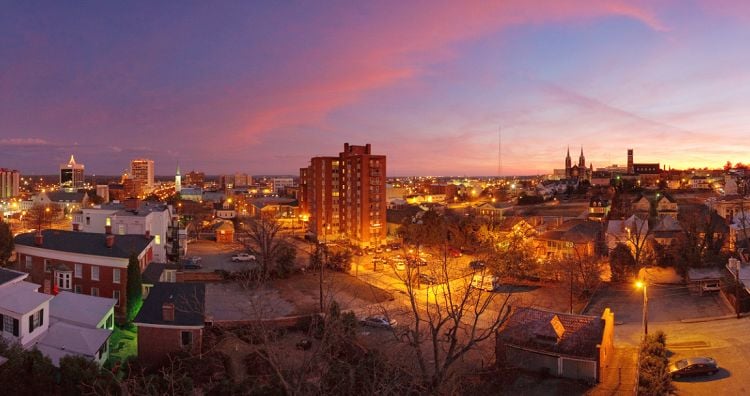The 30 Richest Suburbs in Alabama: Wealth Concentration
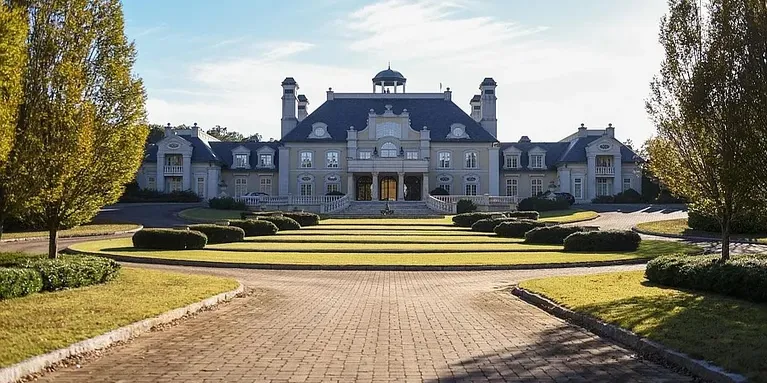
Alabama’s suburban landscape showcases a remarkable concentration of affluent communities that blend Southern hospitality with modern prosperity.
These wealthy enclaves span across the state, from Birmingham’s prestigious neighborhoods to thriving communities near Huntsville, Mobile, and Auburn.
The state’s richest suburbs offer residents exceptional amenities, top-rated schools, and strong property values while maintaining the charm and culture that define Alabama living.
These communities attract families and professionals seeking quality education, safe neighborhoods, and access to both urban conveniences and recreational opportunities.
The wealth distribution across Alabama’s suburbs reflects diverse economic drivers, including technology, healthcare, education, and traditional industries that have shaped the state’s development.
Here are the 30 richest suburbs in Alabama:
1. Mountain Brook
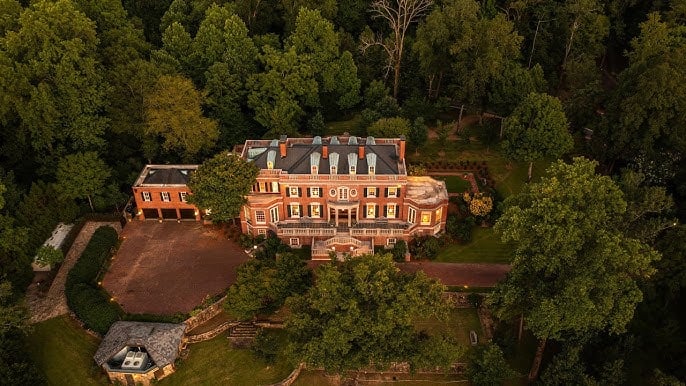
Mountain Brook consistently ranks as Alabama’s wealthiest suburb and one of the richest communities in the United States. This Birmingham suburb maintains an average household income of $302,510 according to 2025 data.
The city houses approximately 22,000 residents in an affluent community known for tree-lined streets and well-maintained neighborhoods. Mountain Brook’s per capita income reaches $97,390, significantly above state and national averages.
Property values reflect the area’s prosperity, with average home values around $1 million. The median household income stands at $130,259, while the poverty rate remains remarkably low at 2.6%.
Mountain Brook’s reputation stems from its top-ranked schools, boutique shopping, and proximity to Birmingham’s amenities. The suburb sits in the Appalachian foothills, offering residents both natural beauty and urban convenience within Alabama’s premier residential community.
2. Vestavia Hills
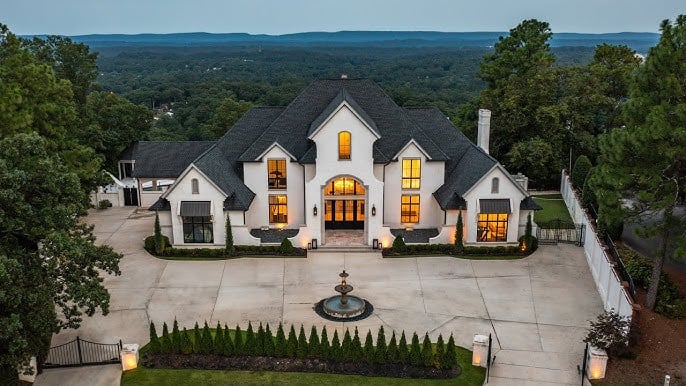
Vestavia Hills ranks as Alabama’s second wealthiest city with a median household income of $102,734. This Birmingham suburb maintains a population of approximately 35,000 residents.
The city was named after former mayor George B. Ward’s 20-acre estate. Residents enjoy a per capita income of $68,777, reflecting the community’s affluent status.
Vestavia Hills offers excellent educational opportunities with top-rated schools throughout the district. The area maintains strong student-teacher ratios and consistently receives high marks from the Alabama Department of Education.
The community features well-established neighborhoods surrounded by scenic Appalachian mountain views. Home values reflect the area’s desirability, with properties commanding premium prices.
Vestavia Hills combines suburban comfort with urban sophistication. The city maintains a thriving business community while preserving its residential charm and strong community spirit.
3. Spanish Fort
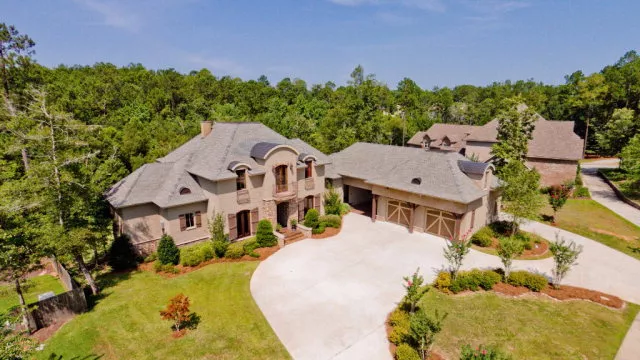
Spanish Fort ranks among Alabama’s wealthiest communities with a median household income of $98,350. This small city maintains exceptionally low poverty and unemployment rates at 4.9% and 1.9% respectively.
The community has a population of 10,083 residents. Housing costs reflect the area’s affluent status, with a median home value of $386,694.
Spanish Fort’s cost of living sits at 105, which is 1.1 times higher than the national average. The median rent in the city is $1,229 per month.
The city’s strong economic indicators and low unemployment rate make it attractive to professionals and families seeking a prosperous suburban environment in Alabama.
4. Hoover
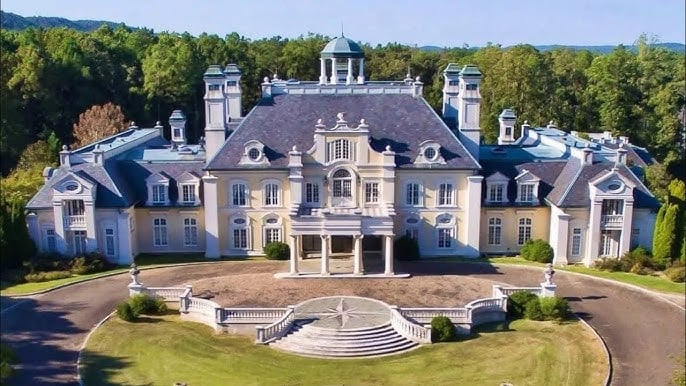
Hoover stands as one of Alabama’s most prosperous suburban communities with a population of 92,401 residents. The city consistently ranks among the top places to live in the state.
Located in Jefferson County, Hoover offers residents a dense suburban environment where most people own their homes. The community attracts families and young professionals seeking quality amenities and excellent schools.
Hoover ranks 2nd among the best suburbs for young professionals in Alabama and 4th overall for best places to live statewide. The city’s strong rankings reflect its economic stability and desirable living conditions.
The suburb features numerous parks and recreational facilities that enhance residents’ quality of life. Its proximity to Birmingham provides easy access to urban employment opportunities while maintaining a peaceful residential atmosphere.
Public schools in Hoover receive high ratings, making the area particularly attractive to families with children.
5. Chelsea
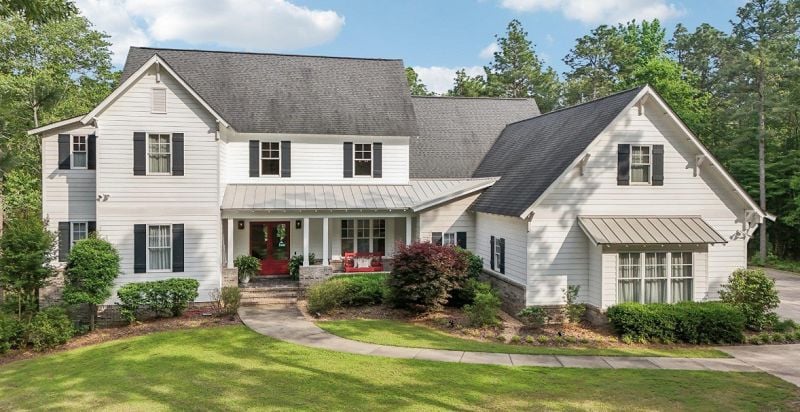
Chelsea ranks among Birmingham’s wealthiest suburbs with a median household income of $97,727. The city maintains a strong sense of community and hometown charm that attracts affluent residents.
Located in Shelby County, Chelsea offers residents a quieter suburban lifestyle while remaining accessible to Birmingham’s urban amenities. The area features well-maintained neighborhoods and quality local services.
The city is known for its barbecue restaurants and dining establishments that draw visitors from surrounding communities. Chelsea’s residential areas consist primarily of single-family homes that appeal to families and professionals.
Despite its smaller size, Chelsea has established itself as a desirable location for those seeking suburban living with higher income levels. The community balances residential tranquility with convenient access to employment centers in the greater Birmingham metropolitan area.
6. Madison
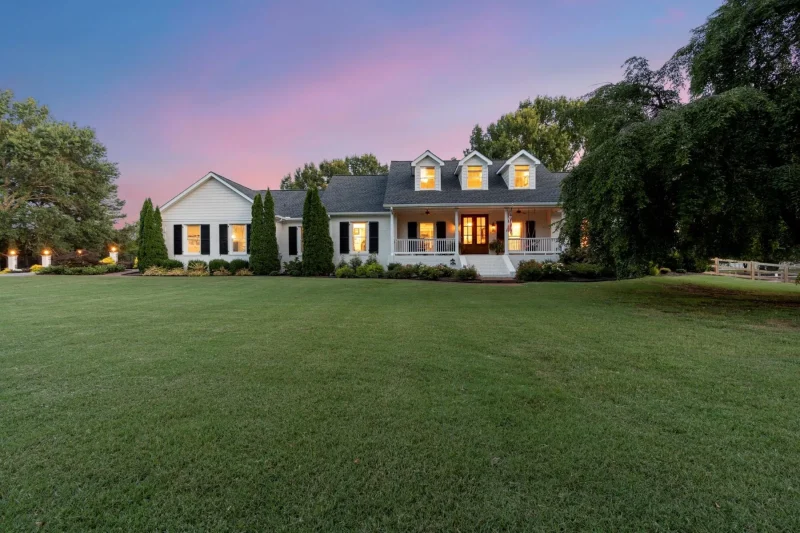
Madison ranks as one of Alabama’s wealthiest suburbs with a median household income of $99,188. The city houses 49,327 residents who enjoy both prosperity and quality amenities.
Located in northern Alabama, Madison has earned recognition as the best suburb to buy property in the state according to Niche rankings. The community attracts families seeking upscale living with modern conveniences.
Home prices in Madison average $250,929, positioning the market above Alabama’s state average of $185,232. Despite this premium, housing remains more affordable than the national median of $318,879.
The suburb combines financial prosperity with family-friendly neighborhoods and welcoming communities. Madison continues growing in popularity as residents seek the balance of wealth and livability it provides.
7. Pelham
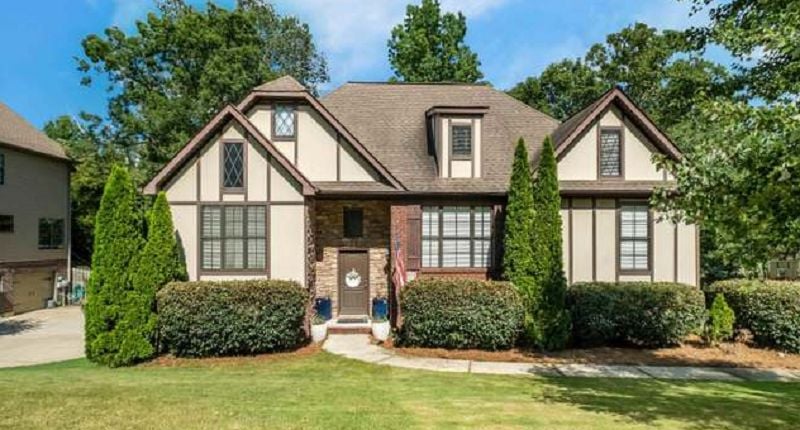
Pelham stands as one of Alabama’s most affluent suburbs, located in Shelby County within the Birmingham metropolitan area. The city maintains a population of approximately 24,000 residents and incorporated on July 10, 1964.
This peaceful suburb offers residents access to excellent amenities while maintaining its distinct community identity. Pelham operates its own school district, providing educational advantages that attract families to the area.
The median home price in Pelham reaches $256,401, which exceeds Alabama’s state average of $185,232. However, housing costs remain below the national median of $318,879, offering relative affordability compared to other wealthy suburbs nationwide.
Pelham’s location provides convenient access to Birmingham’s urban center while preserving a quieter suburban atmosphere. The community features diverse dining and shopping options that serve residents’ daily needs.
The suburb has earned recognition among Alabama’s wealthiest communities through consistent economic growth and development.
8. Homewood
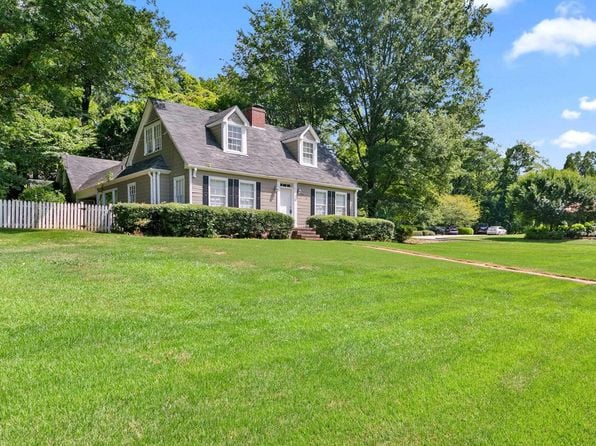
Homewood stands as one of Alabama’s most affluent communities, located approximately five miles south of Birmingham in Jefferson County. The city serves as a prominent commuter suburb with around 28,000 residents.
The community maintains its reputation through excellent educational opportunities. Homewood’s school district consistently earns A ratings from the Alabama Department of Education and ranks among the state’s top performers.
Real estate values in Homewood significantly exceed Alabama’s state average of $185,232. The higher property costs reflect the area’s desirability and quality amenities.
Shopping and entertainment define much of Homewood’s appeal. Soho Square and Edgewood Entertainment districts offer residents upscale retail options, dining establishments, and cultural attractions.
The city’s proximity to Birmingham provides residents with urban employment opportunities while maintaining a suburban lifestyle. This combination of location, schools, and amenities solidifies Homewood’s position among Alabama’s wealthiest communities.
9. Trussville
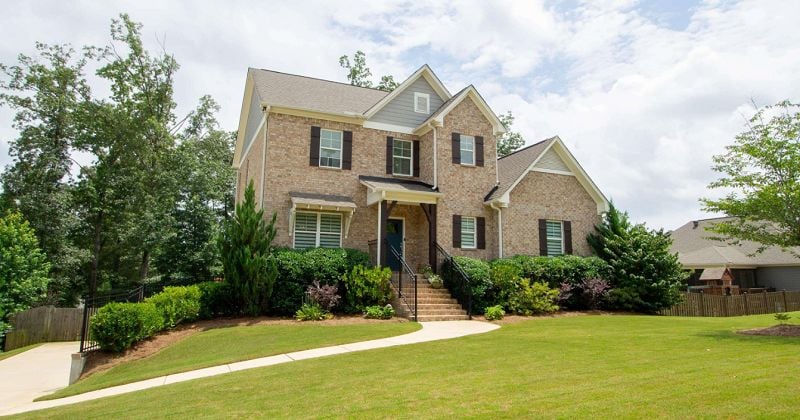
Trussville stands as one of Alabama’s wealthiest suburban communities with approximately 26,000 residents. The city earned recognition from Money Magazine as one of the most liveable cities in the United States.
Located near Birmingham, Trussville offers residents a predominantly suburban atmosphere with strong community ties. The area features friendly neighborhoods that attract families seeking quality living environments.
The city has experienced rapid development in recent years, drawing significant business investment. New commercial establishments continue to open in and around the city center, contributing to local economic growth.
Trussville maintains excellent public schools that serve the community’s educational needs. The combination of quality education, suburban comfort, and proximity to Birmingham’s urban amenities makes it an attractive choice for affluent residents.
The city’s median household income places it among Alabama’s top-tier wealthy communities.
10. Fairhope
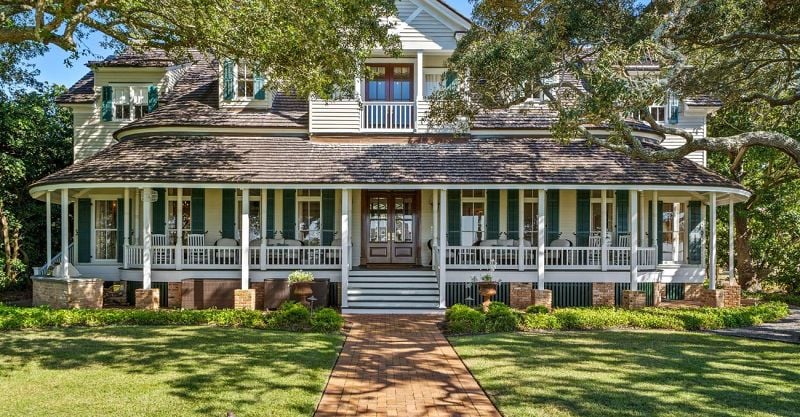
Fairhope sits along Mobile Bay in Baldwin County, offering residents scenic waterfront living with small-town charm. The city attracts affluent families seeking a peaceful coastal lifestyle while maintaining proximity to Mobile’s urban amenities.
The community features tree-lined streets and well-maintained neighborhoods that reflect its status as one of Alabama’s wealthier suburbs. Property values remain consistently high due to the desirable bayfront location and quality of life.
Fairhope’s downtown area showcases local boutiques, restaurants, and art galleries that contribute to its cultural appeal. The famous pier extends into Mobile Bay, providing residents and visitors with stunning sunset views.
The city maintains excellent public services and infrastructure that support its affluent population. Educational opportunities and low crime rates make Fairhope particularly attractive to families with children.
This Baldwin County suburb successfully balances preservation of its historic character with modern development, creating an environment that appeals to wealthy residents seeking both tranquility and sophistication.
11. Auburn
Auburn stands as one of Alabama’s most prosperous communities, driven largely by Auburn University’s economic influence. The city attracts educated professionals and faculty members who contribute to its higher median income levels.
Housing values in Auburn vary significantly across different neighborhoods. The market reflects strong demand from university staff, students, and local professionals seeking quality residential areas.
Auburn’s economy benefits from the stability of higher education employment. University-related jobs provide consistent income streams that support local businesses and maintain property values.
The city offers excellent educational opportunities through both the university and local school systems. This educational foundation attracts families willing to invest in premium housing markets.
Auburn’s neighborhoods near the university campus command higher property values. These areas appeal to faculty, administrators, and professionals who prefer proximity to their workplace while enjoying suburban amenities.
12. Daphne
Daphne ranks as the 11th best suburb for young professionals in Alabama according to 2025 data. The city attracts residents with its strategic location along Mobile Bay and proximity to economic opportunities.
The suburb shows varied income distribution across different neighborhoods. High-earning areas concentrate in specific zones, while moderate and lower-income sections provide housing diversity.
Daphne’s real estate market features some of the most expensive homes in its metropolitan area. Property values have shown consistent trends since 2018, reflecting the community’s desirability.
The city earned recognition as the 16th best place to retire in Alabama out of 191 locations. This ranking reflects its appeal to various demographic groups seeking quality living environments.
Residents benefit from Daphne’s combination of suburban amenities and coastal access. The community maintains strong fundamentals in education, safety, and local services that support its economic standing.
13. Clay
Clay is a growing suburban community in Jefferson County that has attracted affluent residents seeking a quieter lifestyle outside Birmingham. The city has experienced steady population growth and economic development over the past decade.
The median household income in Clay exceeds the Alabama state average significantly. Many residents commute to Birmingham for work while enjoying the benefits of suburban living.
Clay offers excellent public schools through the Jefferson County school system. The area features well-maintained neighborhoods with modern housing developments and established residential areas.
The city provides residents with parks, recreational facilities, and convenient access to shopping centers. Clay’s location along major transportation routes makes it accessible to Birmingham’s employment centers.
Local government focuses on maintaining quality municipal services while preserving the community’s suburban character. The city has implemented planning initiatives to manage growth responsibly.
Housing values in Clay have remained stable, reflecting the area’s desirability among middle and upper-middle-class families.
14. Oxford
Oxford sits in Calhoun County and serves as a thriving suburb in eastern Alabama. The city has experienced steady economic growth over the past decade.
Located near Anniston, Oxford benefits from its proximity to major transportation corridors. Interstate 20 runs through the area, providing convenient access to Birmingham and Atlanta.
The city’s economy relies heavily on retail and manufacturing sectors. Oxford Exchange shopping center attracts residents from surrounding communities and contributes to local tax revenue.
Housing costs in Oxford remain relatively affordable compared to other wealthy Alabama suburbs. The median home values reflect the area’s growing appeal to middle and upper-middle class families.
Oxford’s school system maintains solid academic standards. Local amenities include parks, recreational facilities, and dining establishments that support the community’s quality of life.
The city continues attracting new residents seeking suburban living with urban conveniences nearby.
15. Alabaster
Alabaster sits thirty minutes south of Birmingham and represents the ideal American suburb. The city has earned recognition as one of Alabama’s wealthiest communities with approximately 34,000 residents.
More than 80% of households own their homes, significantly higher than the national average of 68%. The median home price reaches $192,000, which exceeds Alabama’s typical home cost but remains 30% below the national median.
The city attracts families seeking a comfortable suburban lifestyle with welcoming neighborhoods and strong community bonds. Alabaster ranks 10th among Alabama’s best suburbs for raising families according to recent data.
Its proximity to Birmingham provides residents access to urban amenities while maintaining peaceful suburban living. The combination of affordable homeownership and family-friendly environment makes Alabaster an attractive destination for those seeking financial stability and community connection.
16. Cullman
Cullman sits in north-central Alabama and serves as the county seat of Cullman County. The city has built a reputation for its strong agricultural heritage and growing industrial base.
The median household income in Cullman reflects its position as a regional economic center. Local industries include manufacturing, healthcare, and agriculture, providing diverse employment opportunities for residents.
Cullman’s downtown area features historic buildings and local businesses that contribute to the community’s economic stability. The city maintains several parks and recreational facilities that enhance quality of life.
The housing market in Cullman offers affordability compared to larger metropolitan areas while still providing access to amenities. Educational institutions and healthcare facilities support the local economy and attract families to the area.
Cullman’s location provides convenient access to both Birmingham and Huntsville, making it attractive for commuters seeking suburban living with urban accessibility.
17. Prattville
Prattville ranks among Alabama’s more affluent suburban communities with a median household income of $68,464. This places the city in the 62nd percentile nationally, surpassing the typical American household income.
The city demonstrates strong educational attainment levels. Approximately 33% of adults hold bachelor’s degrees or higher, slightly exceeding the national average of 31%.
Housing costs remain reasonable compared to national standards. The median home price sits at $173,534, significantly below the U.S. median of $318,879.
Prattville’s housing market aligns closely with Alabama’s state average of $185,232. This affordability factor enhances the area’s appeal for families seeking suburban living.
The combination of above-average incomes and moderate housing costs creates favorable economic conditions for residents. Educational levels support the community’s economic stability and growth potential.
18. Scottsboro
Scottsboro serves as the county seat of Jackson County in northeastern Alabama. The city sits along the Tennessee River and has a population of approximately 14,000 residents.
The median household income in Scottsboro is around $42,000. This places it below the state median but reflects the economic reality of many smaller Alabama cities.
Scottsboro’s economy relies heavily on manufacturing and tourism. The city hosts several industrial facilities that provide employment opportunities for local residents.
Lake Guntersville and other nearby recreational areas contribute to the local economy through tourism. The Unclaimed Baggage Center, a unique retail attraction, draws visitors from across the region.
Housing costs in Scottsboro remain relatively affordable compared to larger Alabama metropolitan areas. The median home value typically falls well below the state average, making homeownership accessible for many residents.
19. Gadsden
Gadsden ranks among Alabama’s more modest communities in terms of household income. The city has a median household income of $43,598, which falls significantly below the national average.
This income level places Gadsden in the 14th percentile for household earnings across American cities. About 85% of cities nationwide report higher median household incomes than Gadsden.
Educational attainment correlates strongly with income levels in the area. Only 18% of adults in Gadsden hold bachelor’s degrees or higher, compared to 31% nationally.
The city faces economic challenges that impact its overall wealth ranking. Gadsden’s income statistics reflect broader regional economic patterns common in parts of Alabama.
Despite lower median incomes, Gadsden maintains its position as a recognized community within the state’s economic landscape.
20. Guntersville
Guntersville sits along the Tennessee River in Marshall County, Alabama. The city offers residents scenic waterfront living with Lake Guntersville as its centerpiece.
The community attracts families seeking a balance between small-town charm and economic opportunity. Guntersville’s location provides access to outdoor recreation including boating, fishing, and hiking.
Local amenities include well-regarded schools and healthcare facilities. The downtown area features local businesses and restaurants that serve the community.
Real estate values in Guntersville reflect its desirable lakefront location. Many properties offer water access or scenic views of the surrounding landscape.
The city’s economy benefits from tourism related to Lake Guntersville State Park. Manufacturing and retail sectors also provide employment opportunities for residents.
Guntersville maintains a reputation as a safe community with relatively low crime rates. The area appeals to retirees and working families alike.
21. Decatur
Decatur stands as a notable suburban community in northern Alabama with distinct neighborhoods that vary significantly in quality and value. The city features areas with higher median home values that attract affluent residents seeking quality living.
The housing market in Decatur shows considerable disparity across different neighborhoods. Premium areas near lakes, golf courses, and other desirable amenities command higher prices and attract wealthier homebuyers.
Properties with substantial acreage contribute to the city’s appeal among affluent buyers. Some of the most expensive homes in the Huntsville area market are located in Decatur, including properties spanning over 200 acres.
The city offers residents access to various amenities while maintaining reasonable cost of living compared to larger metropolitan areas. Decatur’s strategic location provides convenient access to urban centers while preserving a suburban atmosphere that appeals to families and professionals.
22. Florence
Florence stands as a notable affluent community in northern Alabama along the Tennessee River. The city serves as part of the Shoals metropolitan area and maintains a strong economic foundation.
Residents benefit from diverse employment opportunities in manufacturing, healthcare, and education sectors. The University of North Alabama contributes significantly to the local economy and cultural landscape.
Florence offers well-maintained neighborhoods with varying price points for homeowners. The city’s historic downtown district features restored buildings and local businesses that attract both residents and visitors.
The community provides access to quality educational institutions and recreational facilities. Florence’s location along the Tennessee River creates attractive waterfront properties that command higher market values.
Local amenities include parks, cultural venues, and dining establishments that enhance the overall quality of life for residents.
23. Opelika
Opelika stands out among Alabama’s wealthier communities with its affordable housing market and growing economy. The city offers median home prices of $149,415, significantly below the national average of $318,879.
This Auburn University neighbor benefits from the educational and economic influence of the nearby campus. Opelika’s strategic location provides residents access to both academic resources and employment opportunities in the region.
The city maintains lower housing costs compared to Alabama’s state average of $185,232. This affordability attracts young professionals and families seeking quality living without premium prices.
Opelika’s proximity to major highways and the university creates a stable economic foundation. The community combines small-town charm with access to larger metropolitan amenities through nearby Auburn and Columbus, Georgia.
24. Madison County
Madison County ranks as the third wealthiest county in Alabama. The county reports a median household income of $78,058.
The area has earned a Wealth Index score of 24.99. This places it among the top-performing counties in the state for overall financial well-being.
Madison County’s median home value stands at $306,341. This reflects the strong real estate market in the region.
The county encompasses parts of the Huntsville metropolitan area. This connection to Huntsville contributes to its economic strength and employment opportunities.
Madison County has maintained its wealth ranking consistently in recent years. The area benefits from a stable economic foundation and educated workforce.
25. Tuscaloosa
Tuscaloosa serves as the fifth-largest city in Alabama and home to the University of Alabama. The city combines academic influence with industrial growth, creating diverse economic opportunities.
The presence of the university contributes significantly to the local economy. Faculty, administrators, and staff generate substantial household incomes that elevate the city’s wealth profile.
Manufacturing and automotive industries also drive economic prosperity. Mercedes-Benz operates a major production facility nearby, providing high-paying jobs to residents.
The median household income in Tuscaloosa reflects its mixed economic base. University-affiliated neighborhoods and professional districts show higher income levels compared to student areas.
Real estate values remain stable due to consistent demand from university employees and industry professionals. The city’s dual economy creates sustained wealth accumulation among established residents.
Tuscaloosa’s wealth stems from its role as both an educational center and industrial hub in west-central Alabama.
26. Vestavia Hills South
Vestavia Hills South represents one of the affluent areas within the broader Vestavia Hills community. This neighborhood benefits from its location in Jefferson County, positioning residents near Birmingham’s economic opportunities.
The area maintains the high property values characteristic of the greater Vestavia Hills region. Residents enjoy access to well-regarded schools and established infrastructure that supports the community’s reputation for quality living.
Housing in Vestavia Hills South typically features well-maintained properties that reflect the area’s economic standing. The neighborhood attracts families and professionals seeking suburban amenities within proximity to urban centers.
Local amenities include parks and recreational facilities that serve the community. The area’s location provides convenient access to shopping centers and dining establishments throughout the Vestavia Hills region.
Transportation connections allow residents to commute efficiently to Birmingham and surrounding areas for employment opportunities.
27. Mountain Brook East
Mountain Brook East represents one of the more established residential areas within Alabama’s wealthiest city. This section of Mountain Brook maintains the same high property values and affluent demographics that define the broader community.
The neighborhood features tree-lined streets characteristic of the Mountain Brook area. Homes here typically reflect the architectural standards expected in Alabama’s most expensive suburb.
Residents benefit from Mountain Brook’s top-ranked school system and strong community amenities. The area maintains close proximity to Birmingham while offering the exclusive suburban lifestyle Mountain Brook is known for.
Property values in Mountain Brook East align with the city’s overall real estate market. The neighborhood attracts professionals and executives who contribute to Mountain Brook’s average household income of over $300,000.
Mountain Brook East shares the same municipal services and governance as the rest of Mountain Brook.
28. Mountain Brook West
Mountain Brook West represents one of the most exclusive residential areas within Alabama’s wealthiest city. This neighborhood sits in the western portion of Mountain Brook, benefiting from the city’s overall affluence and prestige.
The area features upscale homes nestled among mature trees and well-maintained streetscapes. Property values in Mountain Brook West reflect the broader city’s status as Alabama’s most expensive suburb.
Residents enjoy access to Mountain Brook’s top-rated school system and proximity to boutique shopping districts. The neighborhood maintains the refined atmosphere that has made Mountain Brook famous throughout the Southeast.
Mountain Brook West provides easy access to Birmingham while offering a secluded suburban environment. The area’s location within Jefferson County places it among the state’s most desirable residential communities.
29. Bessemer
Bessemer ranks among Alabama’s more affordable suburban communities rather than its wealthiest areas. The city offers significantly lower housing costs compared to state and national averages.
Median home prices in Bessemer sit at $160,650. This represents substantial savings compared to the U.S. median of $318,879 and Alabama’s state average of $185,232.
The community provides budget-conscious residents with homeownership opportunities. Bessemer’s housing market remains accessible to middle-income families seeking suburban living.
Located in Jefferson County, Bessemer maintains its position as a cost-effective alternative to more expensive Birmingham suburbs. The city attracts residents prioritizing affordability over luxury amenities.
While not featuring among Alabama’s highest-income communities, Bessemer offers practical suburban living. The area serves families seeking reasonable housing costs within commuting distance of Birmingham’s employment centers.
30. Sylacauga
Sylacauga rounds out Alabama’s wealthiest suburbs as a small city located in Talladega County. The community sits in the central part of the state, roughly 50 miles southeast of Birmingham.
The city features varied neighborhood quality based on median home values. Market data shows residents gravitate toward areas with higher property values and better amenities.
Sylacauga’s economy benefits from its location along major transportation corridors. The city maintains access to both Birmingham’s job market and regional employment opportunities.
Housing costs in Sylacauga remain moderate compared to Alabama’s most expensive suburbs. The area attracts families seeking affordable homeownership in a small-town setting.
Local amenities include parks, recreational facilities, and community services. The city provides basic infrastructure while maintaining lower overall living expenses than metropolitan areas.
What Defines a Wealthy Suburb in Alabama?
Wealthy Alabama suburbs are distinguished by household incomes exceeding $150,000, property values above state medians, and strong educational systems. These communities typically feature low property tax rates and proximity to major metropolitan areas like Birmingham.
Median Household Income Metrics
Mountain Brook leads Alabama’s wealthy suburbs with an average household income of $302,510. This Birmingham suburb sets the benchmark for affluent communities statewide.
Most wealthy Alabama suburbs maintain median household incomes between $150,000 and $300,000. This range places them significantly above the state average and creates clear economic distinctions.
Income thresholds for wealthy suburb classification typically include:
- Entry level: $150,000+ median household income
- Mid-tier wealthy: $200,000-$250,000 range
- Top tier: $300,000+ (Mountain Brook tier)
Birmingham metropolitan area suburbs dominate the highest income brackets. Seven of Alabama’s top 10 wealthiest communities are located within this region.
Property Values and Real Estate Trends
Property values in Alabama’s wealthy suburbs range from $400,000 to over $1 million. Mountain Brook leads with average home values reaching $1 million, while other affluent areas typically see homes between $400,000-$700,000.
Alabama’s property tax advantage enhances wealthy suburb appeal. The state maintains one of the nation’s lowest property tax rates at 0.41% of assessed value.
Real estate trends show wealthy suburbs clustering near major cities. Proximity to Birmingham, Huntsville, and Mobile drives premium pricing and sustained demand.
Home price appreciation in these areas outpaces state averages. Established neighborhoods with mature amenities command the highest premiums.
Demographic and Educational Factors
Top-ranked school systems define Alabama’s wealthy suburbs. These communities invest heavily in education infrastructure and maintain superior academic performance metrics.
Demographic profiles show higher education levels and professional employment concentrations. Residents typically hold advanced degrees and work in management, healthcare, or technology sectors.
Key demographic indicators include:
- College graduation rates above 75%
- Professional/managerial employment over 60%
- Low crime rates
- Strong community engagement
Tree-lined streets and established neighborhoods create desirable living environments. These physical characteristics support property values and attract affluent residents seeking quality of life improvements.
Lifestyle and Community Features
Alabama’s wealthiest suburbs offer exceptional educational opportunities, extensive recreational facilities, and comprehensive safety services. These communities prioritize family-friendly amenities and maintain high standards for public services that justify their premium real estate values.
Quality of Schools and Education
The richest suburbs in Alabama consistently feature top-rated school districts that attract families seeking educational excellence. Mountain Brook, Vestavia Hills, and Homewood maintain some of the state’s highest-performing public schools with advanced placement programs and college preparatory curricula.
These districts typically spend $12,000-$15,000 per student annually, significantly above the state average. Class sizes remain small, often maintaining 15-20 students per teacher ratios.
Key Educational Features:
- Advanced STEM programs and technology integration
- Comprehensive arts and music departments
- High college acceptance rates (85-95% for top suburbs)
- National Merit Scholar recognition programs
Private school options complement public education in these areas. Many suburbs host prestigious private institutions that serve families throughout the metropolitan regions.
Recreation, Parks, and Amenities
Affluent Alabama suburbs provide extensive recreational infrastructure centered around country clubs, golf courses, and nature preserves. Mountain Brook features multiple championship golf courses, while Huntsville suburbs offer access to Monte Sano State Park’s hiking trails.
Community centers in these areas typically include fitness facilities, swimming pools, and tennis courts. Many suburbs maintain dedicated sports complexes for youth athletics and adult recreation leagues.
Popular Amenities Include:
- Private country clubs with golf and dining
- Walking trails and greenway systems
- Community pools and athletic facilities
- Premium shopping districts and restaurants
Cultural amenities flourish in these communities. Art galleries, farmers markets, and seasonal festivals create vibrant social environments that foster neighborhood connections.
Public Safety and Community Services
Crime rates in Alabama’s wealthiest suburbs remain significantly below state and national averages. These communities invest heavily in law enforcement, often maintaining ratios of 2-3 officers per 1,000 residents.
Emergency response times typically average 3-5 minutes for police and fire services. Many suburbs operate their own fire departments and emergency medical services rather than relying on county-wide systems.
Safety Statistics:
- Violent crime rates: 0.5-1.2 per 1,000 residents
- Property crime rates: 8-15 per 1,000 residents
- Emergency response: Under 5 minutes average
Municipal services extend beyond safety to include regular trash collection, street maintenance, and landscaping of public spaces. These suburbs often provide additional services like leaf collection and special event coordination that enhance quality of life.



